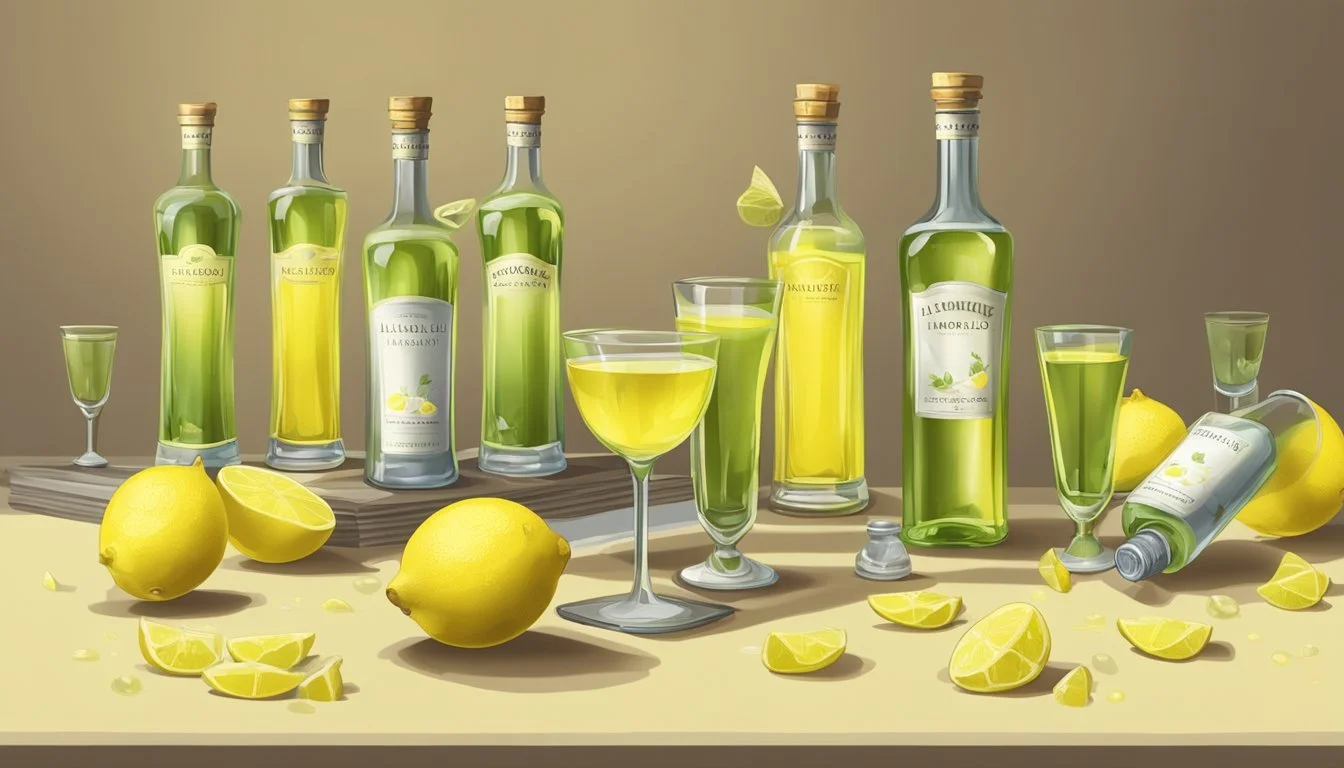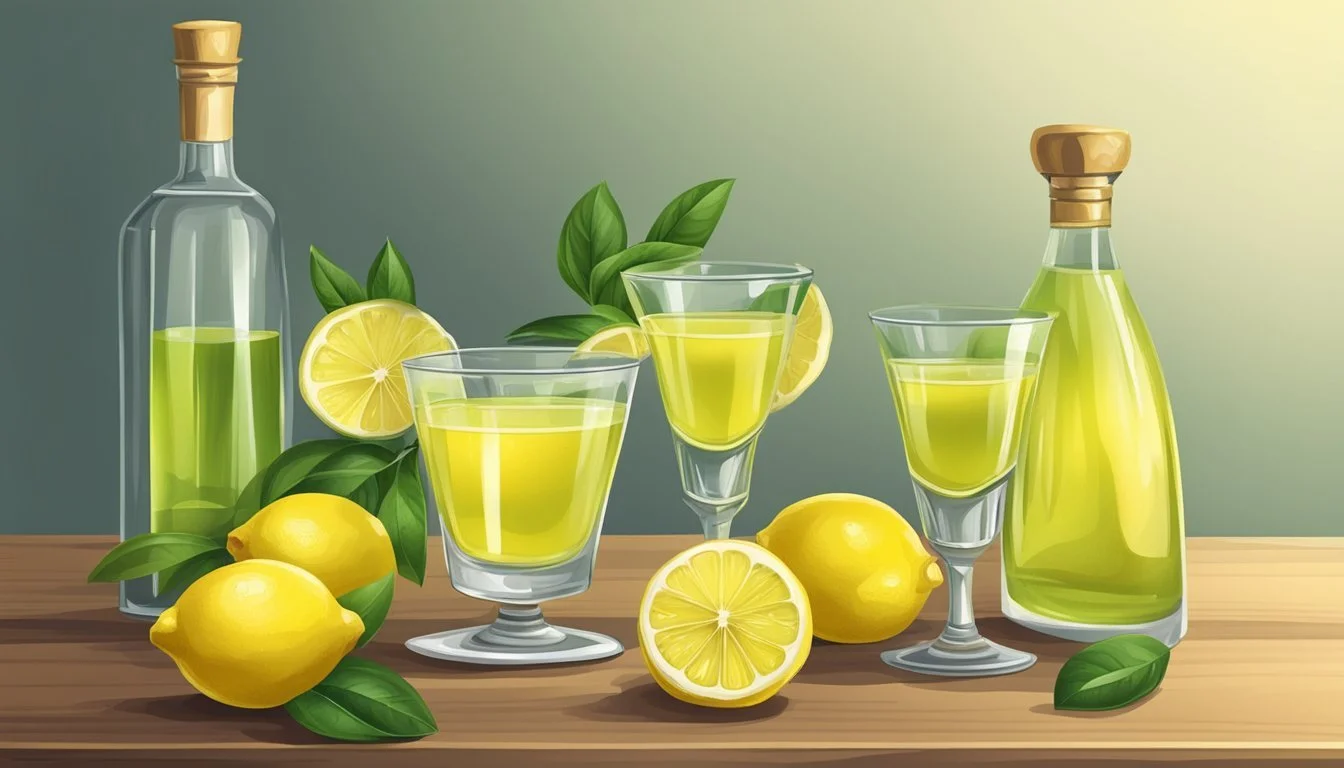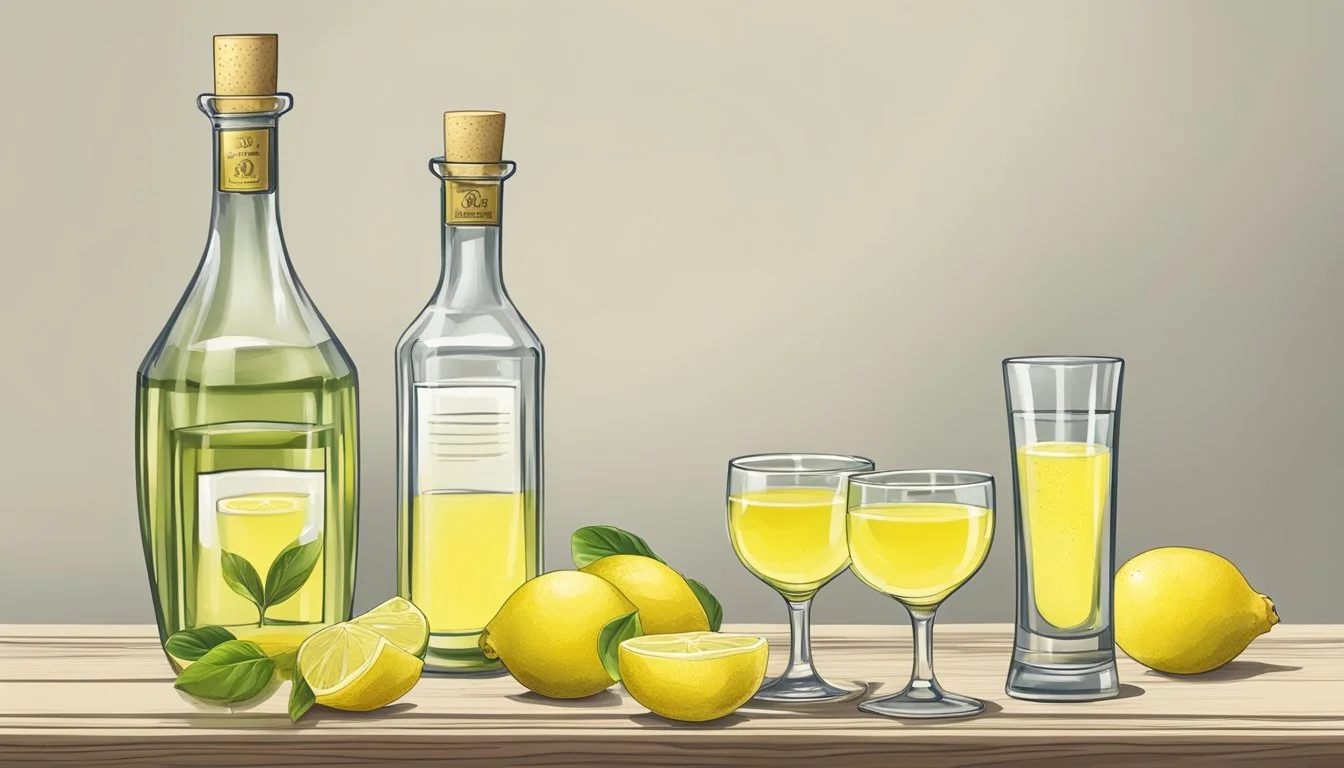How Many Servings of Limoncello is Too Much
Understanding Safe Consumption Limits
Limoncello, the iconic Italian liqueur, is often enjoyed as a digestif after a hearty meal. Known for its bright, refreshing lemon flavor, this drink is a staple in Italy and beyond. The general recommendation is to limit oneself to 2-3 servings of limoncello on any given occasion to avoid overindulgence. Each serving is typically one shot, or 30 milliliters, which provides a moderate amount of alcohol.
Enjoying limoncello is more about savoring the experience than consuming large quantities. Given its high alcohol content, it is essential to drink in moderation. Excessive consumption can lead to a range of issues, from mild dizziness to severe intoxication, undermining the enjoyment of what should be a delightful, social experience.
Limoncello takes pride in its craftsmanship, with lemon peels being steeped in high-proof alcohol and later balanced with a sugar syrup. As a digestif, it’s intended to be enjoyed slowly and in small quantities. Thus, sticking to 1-2 servings helps enhance your meal without crossing into unpleasant territory.
Understanding Limoncello
Limoncello, an Italian liqueur, is deeply rooted in the culture of Southern Italy, particularly the Amalfi Coast. Its unique characteristics stem from its ingredients and meticulous production process.
Origins and Cultural Significance
Limoncello hails from Southern Italy, especially the Amalfi Coast and Sorrento. This region is renowned for its quality lemons, specifically Sorrento lemons, which are fundamental to the liqueur's flavor. The drink is traditionally enjoyed as a digestif following meals, cherished for its sweet and tangy profile. Its creation dates back to the early 20th century, encapsulating the essence of Italian hospitality. Today's limoncello is a symbol of Italian culinary tradition, often served chilled in small glasses.
Limoncello Characteristics
Limoncello is noted for its vivid yellow color and robust lemon flavor. The liqueur is both sweet and tart, with a syrupy texture that results from the substantial amount of sugar used in its preparation. Typically, a well-made limoncello balances the sharp zest of lemon with the sweetness of caramelized sugars. The alcohol content can range from 25% to 35%, giving it a noticeable but smooth kick. When served straight from the freezer, its cold temperature enhances these characteristics and provides a refreshing finish.
The Production Process
The production of authentic Italian limoncello involves several key steps. First, Sorrento lemon peels are steeped in high-proof alcohol for a prolonged period, usually several weeks. This step extracts the essential oils, imparting the signature lemon flavor. After steeping, the lemon-infused alcohol is mixed with a simple syrup made from sugar and water. The mixture is then left to age, allowing the flavors to meld together. The final product is filtered and bottled, resulting in a clear, bright-yellow liqueur. The quality of the lemons and the precision of the production steps are critical in achieving the desired taste and texture.
Health and Safety Considerations
Understanding the health and safety aspects of consuming Limoncello is crucial. Key points include awareness of its alcohol content for safe consumption and recognizing any potential allergy or sensitivity issues.
Alcohol Content and Safe Consumption
Limoncello typically has a high alcohol content, usually between 25% to 30% ABV (alcohol by volume). Drinking it responsibly is essential. A standard serving size for Limoncello is a small glass or shot glass, which is typically around 1.5 ounces.
Consuming multiple servings can quickly increase your alcohol intake, potentially leading to intoxication. It's advisable to limit consumption to one or two servings to enjoy it without overindulging. Also, knowing the ABV can help you monitor your intake and stay within safe drinking limits. Those with lower alcohol tolerance should exercise caution and possibly opt for smaller servings.
Identifying Allergy and Sensitivity Issues
Some individuals may experience allergic reactions or sensitivities to the ingredients used in Limoncello, such as citrus fruits or alcohol. Symptoms can range from mild, such as itching or stomach discomfort, to severe reactions like difficulty breathing.
It's important to be aware of any personal allergies and check the ingredient list if possible. If you suspect an allergy or sensitivity to any component, it's best to avoid consumption. Consulting with a healthcare provider can provide guidance tailored to your specific health needs.
Preparation and Serving Suggestions
Proper preparation and serving of limoncello ensure the best flavor and experience. This involves meticulous crafting and specific serving techniques.
Homemade Limoncello Crafting
To make homemade limoncello, start by zipping lemons to gather the zest, avoiding the bitter white pith. Use high-proof grain alcohol like Everclear for the best infusion. The peels steep in the alcohol for about a week, extracting essential oils and vibrant color.
Next, create a simple syrup using granulated sugar and water. Mix the infusion with the simple syrup, adjusting the sweetness to taste.
Serve limoncello directly from the freezer in chilled glasses to maintain its crispness. Pour quickly to keep it cold, ensuring a refreshing drink.
Culinary Uses of Limoncello
Limoncello, a versatile lemon liqueur, finds its way into a variety of dishes. It can enhance both savory recipes and sweet treats, adding a bright lemony flavor.
Cooking with Limoncello
In savory dishes, limoncello can be used as a marinade or a reduction sauce ingredient. Marinades with limoncello work well for poultry and seafood, imparting a tangy citrus flavor that complements the natural tastes of the meat.
For reductions, limoncello pairs well with herbs like thyme and rosemary. Simply reduce the limoncello over low heat until it thickens slightly, then drizzle it over grilled chicken or fish. It’s particularly effective in bringing out the flavors in Mediterranean cuisine.
Limoncello-Infused Desserts
Limoncello shines in desserts, providing a zesty contrast to sugary bases. Limoncello tiramisu is a refreshing twist on the classic, replacing coffee with limoncello and incorporating lemon curd layers.
For cakes and baked goods, adding limoncello to the batter or glaze gives a bright, citrusy aroma. It's common in pound cakes or lemon bundt cakes, enhancing the flavor profile.
Ice creams and sorbets can be elevated by adding a splash of limoncello, creating a refreshing dessert perfect for summer. The alcohol content helps achieve a smoother texture, while the lemon flavor remains pronounced.
Enhancing the Limoncello Experience
Limoncello can be enjoyed in several ways, both in combination with food and as an ingredient in creative cocktails. Proper pairing and innovative recipes can elevate the experience.
Pairing Foods with Limoncello
Pairing limoncello with the right foods can enhance the tasting experience. Being a traditional Italian digestif, it complements various dishes, particularly those with subtle flavors. Seafood dishes, such as grilled shrimp or smoked salmon, pair excellently due to their light and fresh profiles.
Desserts, especially those with citrus elements like lemon tarts or orange-infused pastries, can also complement the sweet and tart notes of limoncello. For a simpler pairing, serving it alongside a plate of fresh fruits, such as strawberries and berries, highlights its refreshing qualities.
Cheeses with mild flavors, like ricotta or mascarpone, offer a creamy contrast to limoncello's sharpness. This makes a delightful end to a meal, rounding off with balanced richness.
Creative Drink Recipes
Limoncello is versatile and can be used in various exciting cocktail recipes. The classic Limoncello Spritz combines limoncello with Prosecco and club soda, garnished with an orange twist for a refreshing summer drink.
For a richer flavor, the Limoncello Martini mixes vodka with limoncello and a dash of fresh lemon juice, served in a chilled glass. This cocktail is perfect for evening gatherings and adds a sophisticated touch.
Another inventive recipe is the Limoncello Basil Smash, blending limoncello with fresh basil leaves, sugar syrup, and a squeeze of lemon. This drink is light, herbaceous, and ideal for garden parties.
Experimenting with infusions, such as adding lemon zest or using homemade sugar syrup, can further personalize your cocktails. Each recipe can be customized to the desired sweetness or tartness, ensuring a perfect drink tailored to individual preferences.
Practical Tips and Tricks
Ensuring the quality and presentation of Limoncello involves selecting the best ingredients, mastering infusion techniques, and paying attention to bottling and presentation.
Selecting the Best Ingredients
Choosing the right lemons is crucial. Organic lemons are ideal because they lack pesticides that can taint the flavor.
Among organic varieties, Meyer lemons are popular due to their sweetness and fragrance. A microplane zester or a vegetable peeler is essential for zesting.
Use a high-proof alcohol like Everclear 151 or another neutral spirit to achieve the appropriate potency and flavor extraction. This ensures a strong infusion without interfering with the lemon essence.
Infusion Techniques and Timing
Steeping the lemon peels correctly is vital. Zest about 20 grams (0.75 oz) of lemon peel, focusing on the yellow part only, as the white pith can impart bitterness.
Place the zest in a clean jar with 300ml of the high-proof alcohol. Allow it to infuse for a week, shaking the jar daily to encourage the extraction of oils.
When ready, filter the mixture with a fine mesh sieve or coffee filter to remove the zest. Combine the filtered liquid with a simple syrup made from 600ml of water and 200 grams of sugar.
The end result should be stored in a cool, dark place to develop the flavors further.
Bottling and Presentation Ideas
The presentation of Limoncello can enhance its appeal as both a personal treat and a gift. Use glass bottles for a classic look. A funnel helps avoid spills during bottling.
Consider adding personalized labels for a touch of elegance. The color of Limoncello should be a vibrant yellow, indicating fresh and properly infused peels.
For gifting, decorative ribbon or a small tag can make the bottle stand out. Serving in chilled glassware can also elevate the drinking experience, making it a refreshing and visually appealing post-dinner delight.
Purchasing and Brands
To enjoy limoncello without overindulgence, it's important to select a high-quality brand and understand the pricing. This ensures not only a pleasant drinking experience but also value for money.
Choosing a Quality Limoncello Brand
Choosing a quality limoncello is crucial. Look for established brands like Pallini, Luxardo, and Gioia Luisa. These brands are known for their authentic Italian recipes and consistent quality.
Picking the right brand often involves considering the balance of sharpness and sweetness. Gioia Luisa, for instance, is popular for its well-balanced flavor originating from Sorrento lemons. Pallini and Luxardo are also top choices, known for their traditional production methods and fresh, intense flavors.
Don’t overlook smaller producers, as they sometimes offer unique and high-quality bottles. Checking reviews and expert recommendations can provide insight into a brand's reputation and quality.
Understanding Pricing and Value
The cost of a bottle of limoncello can vary significantly. Store-bought bottles typically range from $13.99 to $24.99, with an average price around $20 USD.
When evaluating value, consider both price and quality. High-end brands like Pallini and Luxardo might cost more but often provide superior taste and authenticity. On the other hand, more affordable options like Meletti or Fabrizia can still offer good quality without breaking the bank.
Making limoncello at home using an Italian limoncello recipe can be cheaper in terms of ingredients but requires more time and effort. For most, purchasing a trusted brand offers convenience and reliable quality.
FAQs in Limoncello Culture
Limoncello, a traditional Italian liqueur, involves a specific recipe and serving method. Addressing common misunderstandings and maximizing the enjoyment of limoncello are essential for appreciating this unique drink.
Misconceptions and Common Questions
Many believe that limoncello should be served at room temperature, yet the proper way is chilled. Serving it cold enhances the flavor and refreshing qualities.
Another frequent question is whether homemade limoncello must include additives or preservatives. Authentic recipes contain only lemons, sugar, water, and alcohol. Additives can alter the taste and aren’t necessary for preservation.
A common misunderstanding is that all limoncellos are created equal. Variations in ingredient quality and preparation methods can result in different flavor profiles. Authentic limoncello typically uses high-quality lemons, often from the Amalfi Coast or Sorrento.
Optimizing Limoncello Enjoyment
The optimal temperature for serving limoncello is just above freezing. Storing it in the freezer ensures it’s at its best when served.
Using the correct glassware can also impact the experience. Small, chilled shot glasses are traditional and help maintain the correct temperature.
Limoncello is often enjoyed as a digestif, meant to be consumed after a meal. This practice is linked to aiding digestion and complementing the flavors of the meal that preceded it.
To make the most out of a homemade limoncello recipe, balance the sugar and water ratios for a smooth, not overly sweet liqueur. Adjusting these measurements can fine-tune the final product to personal preference.










